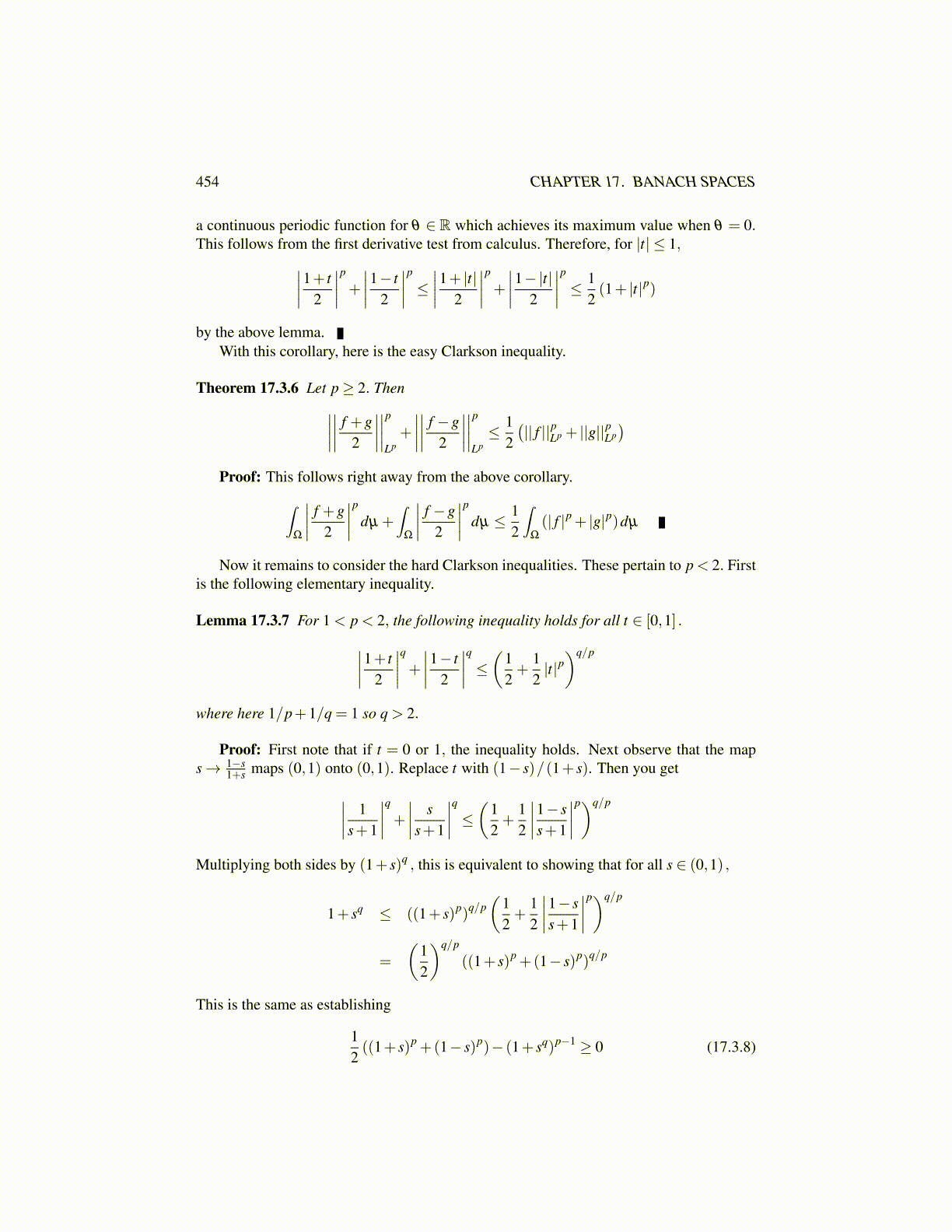
454 CHAPTER 17. BANACH SPACES
a continuous periodic function for θ ∈ R which achieves its maximum value when θ = 0.This follows from the first derivative test from calculus. Therefore, for |t| ≤ 1,∣∣∣∣1+ t
2
∣∣∣∣p + ∣∣∣∣1− t2
∣∣∣∣p ≤ ∣∣∣∣1+ |t|2
∣∣∣∣p + ∣∣∣∣1−|t|2
∣∣∣∣p ≤ 12(1+ |t|p)
by the above lemma.With this corollary, here is the easy Clarkson inequality.
Theorem 17.3.6 Let p≥ 2. Then∣∣∣∣∣∣∣∣ f +g2
∣∣∣∣∣∣∣∣pLp+
∣∣∣∣∣∣∣∣ f −g2
∣∣∣∣∣∣∣∣pLp≤ 1
2(|| f ||pLp + ||g||pLp
)Proof: This follows right away from the above corollary.∫
Ω
∣∣∣∣ f +g2
∣∣∣∣p dµ +∫
Ω
∣∣∣∣ f −g2
∣∣∣∣p dµ ≤ 12
∫Ω
(| f |p + |g|p)dµ
Now it remains to consider the hard Clarkson inequalities. These pertain to p < 2. Firstis the following elementary inequality.
Lemma 17.3.7 For 1 < p < 2, the following inequality holds for all t ∈ [0,1] .∣∣∣∣1+ t2
∣∣∣∣q + ∣∣∣∣1− t2
∣∣∣∣q ≤ (12+
12|t|p)q/p
where here 1/p+1/q = 1 so q > 2.
Proof: First note that if t = 0 or 1, the inequality holds. Next observe that the maps→ 1−s
1+s maps (0,1) onto (0,1). Replace t with (1− s)/(1+ s). Then you get
∣∣∣∣ 1s+1
∣∣∣∣q + ∣∣∣∣ ss+1
∣∣∣∣q ≤ (12+
12
∣∣∣∣1− ss+1
∣∣∣∣p)q/p
Multiplying both sides by (1+ s)q , this is equivalent to showing that for all s ∈ (0,1) ,
1+ sq ≤ ((1+ s)p)q/p(
12+
12
∣∣∣∣1− ss+1
∣∣∣∣p)q/p
=
(12
)q/p
((1+ s)p +(1− s)p)q/p
This is the same as establishing
12((1+ s)p +(1− s)p)− (1+ sq)p−1 ≥ 0 (17.3.8)